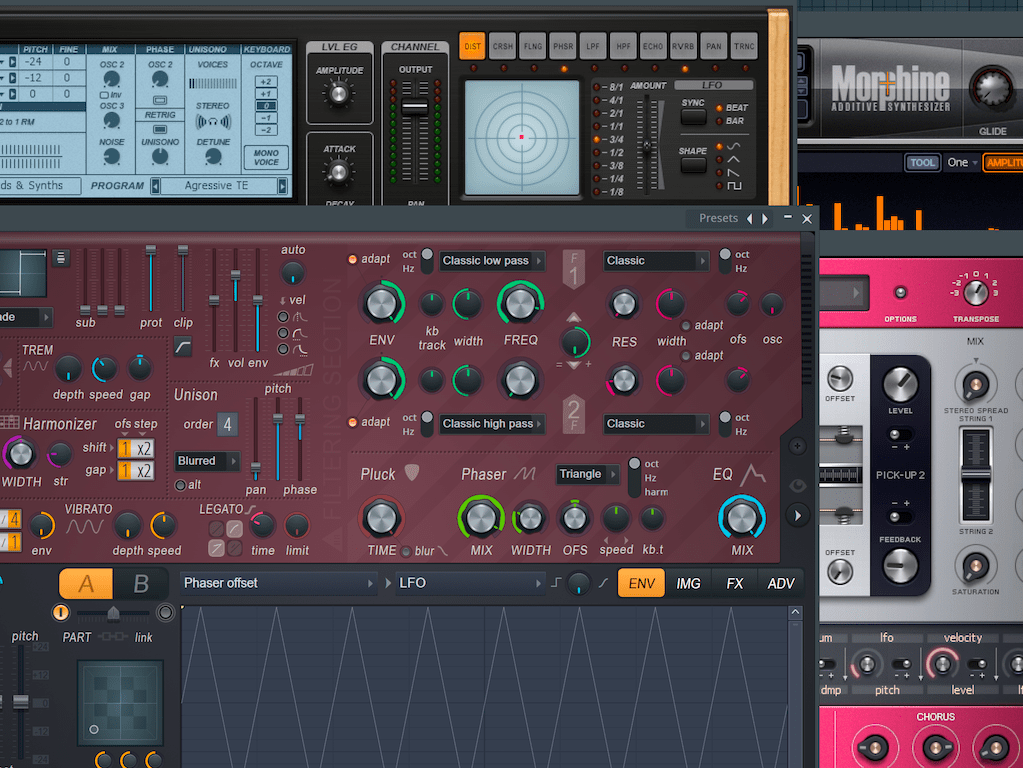
This will change the bandwidth intelligently to make the effect sound the same for each keyboard note Resonance
Flstudio vst full#
To smooth the effects further over the full audio spectrum there is the adapt light. Going above 100% will add or decrease (inverse) the amount of harmonics, another tool to add flavour to your sounds. Keyboard tracking: When enabled the cut-off will follow your keyboard notes and it makes sure that there are an equal amount of harmonics for each tone. You can also use the line editor to only have it affect a certain region of harmonics, should you desire to do so. Width will determine how many harmonics will be affected by the filter shape. Use right click -> edit articulator for quick access. Since any parameter can be customized in the line editor you can easily create your own custom shapes. It has a logical envelope knob and frequency cut-off knob. You can either have them function in parallel or in series. There are two separate filter modules, by default the 2nd isn’t active. The sound produced in the image section will also pass through the following modules and will be discussed after.
Flstudio vst how to#
This is where the harmonics are initially synthesized, the following modules will influence how this one creates which Harmonics, when and how to produce their frequencies. Some of the other features are involved in the amount of CPU you permit Harmor to use to produce its sounds, you can lower the image resynthesis quality and lower the live playback quality without affecting the rendered audio output. The ADV tab lets you determine the order of both the additive/subtractive modules and the FX modules. You can also determine the amount of the specific effect per set of harmonics with various line shapes, like a slope, a curve, a sine wave or a manually drawn slope.ĭue to the huge amount of options, I can only highlight a few of them in this review, but the general idea should become clear. In the editor, you can set time-based envelopes and LFO’s in ms and in BPM mode.

Opening up any of the parameters in the above-shown parameter list will open the IL line editor.

You basically have total control over the sound at the most fundamental level, this is perfect for hard-core sound engineers who want to be able to push the definition of surgical cuts. One of the results is decreased CPU usage. The only exception is the classic FX tab, every other effect is based on this principle. Subtractive synths take frequencies away from the main sound, Harmor just doesn’t generate them in the synthesis phase. Parameters that can be modulated (Left), and linked to several modulators (Right). The crazy part is the number of customizable parameters and the level of detail in which these can be edited, basically down to every 516 harmonics. What Harmor does is different, it sends commands to the additive part to manipulate the harmonic oscillators and reproduce the traditional effect. The first stage of Harmor’s subtractive synthesis doesn’t subtract audio to get the resulting sound. So, why is Harmor an additive/subtractive synth?

Harmor produces every harmonic individually, up to 516 instances of them per part (A/B), which are visualized on the right panel in the visualizer. The default setting is a saw wave, which consists of every harmonic frequency smashed together. Harmor is an additive synth, meaning that the sounds are built up from a sum of sine waves. How it works: Additive and Subtractive Combine Resulting in its powerful soundscapes.īut how does Harmor do what it does, and is it something for you? Let’s dive in. Early on one thing became very clear, Harmor is a beast with an immense amount of sound design capabilities. For this review, I had the chance to play with the synth and learn a whole lot about sound design in the process. Harmor is the flagship VST synth for Image-line, the same people who brought us FL studio.


 0 kommentar(er)
0 kommentar(er)
